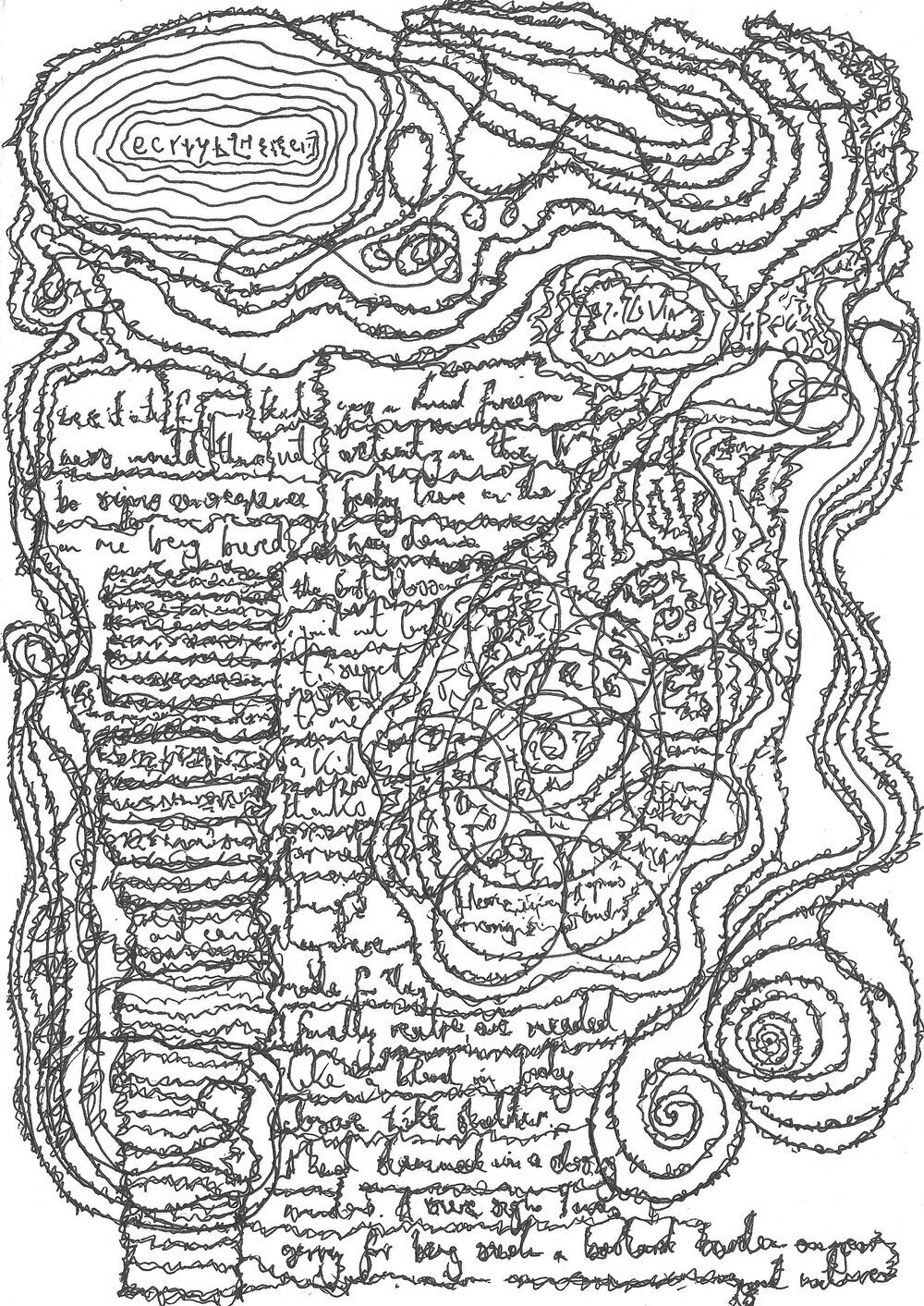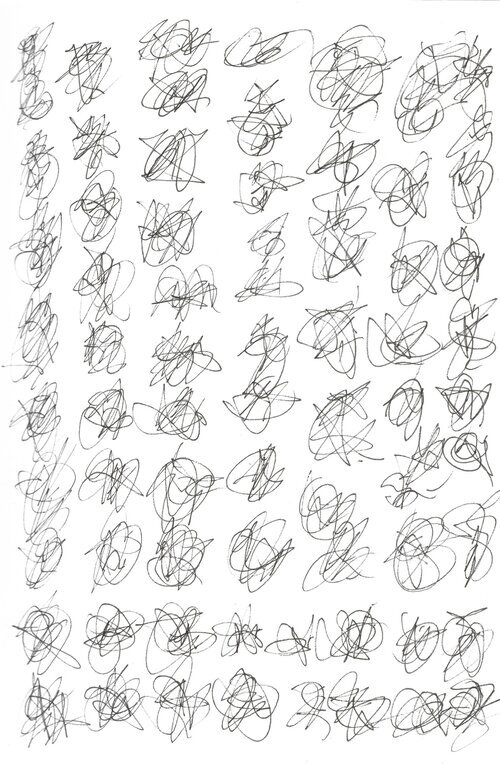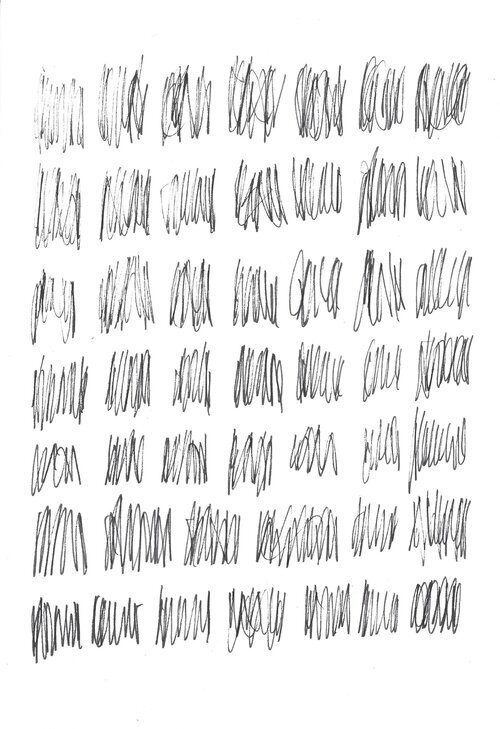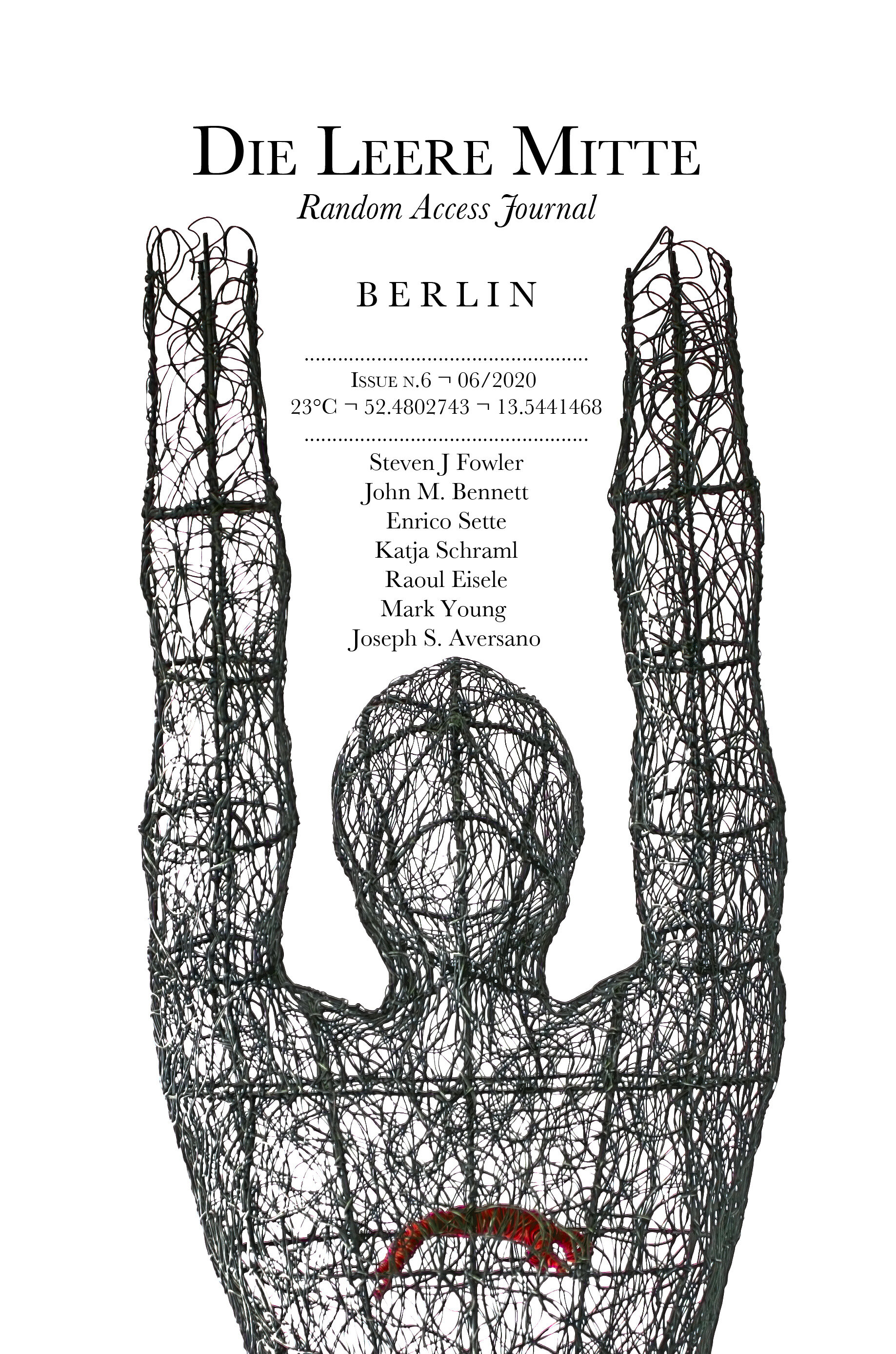Years in the making, The Selected Scribbling and Scrawling of SJ Fowler (me) is now available from Zimzalla. zimzalla.co.uk/051-sj-fowler-scribbling-and-scrawling-2nd-edition/
From the publisher - The Selected Scribbling and Scrawling of SJ Fowler is an assembly of hand-drawn, instinctive visual poems from beyond the ragged edge of language. Arguably the most comprehensive book of asemic poetry ever published in the UK, this sizeable revamped new edition includes images of live asemic performances alongside over 100 visual poems divided, and introduced, in chapters. Asemic neurons butt up against poetic constellations, portraits and diagrams. The volume is bookended with new articles on the asemic endeavours of SJ Fowler from David MacLagan, Tim Gaze, Michael Jacobsen and David Spittle, plus a written interview between Fowler and Zimzalla editor Tom Jenks. Click here for a sample.
Click here to buy for £11.99 in the UK.
I'm happy to announce the release of my latest visual poetry book, collecting the vast majority of my asemic writing in one beautifully produced volume. I had the best time working on this, developing the first edition, working with Tom Jenks. It means the world to me too that the volume is full of brilliant reflections on my scribbles by such luminaries in the asemic world - David Maclagan, Tim Gaze, Michael Jacobsen, they all influenced me a lot, and the long critical piece by David Spittle is brilliant. I spent all summer tinkering, theorising around these abstract writings, really working hard on my intros to each section, and this book is the result, a true consolidation of my travails into asemia





























